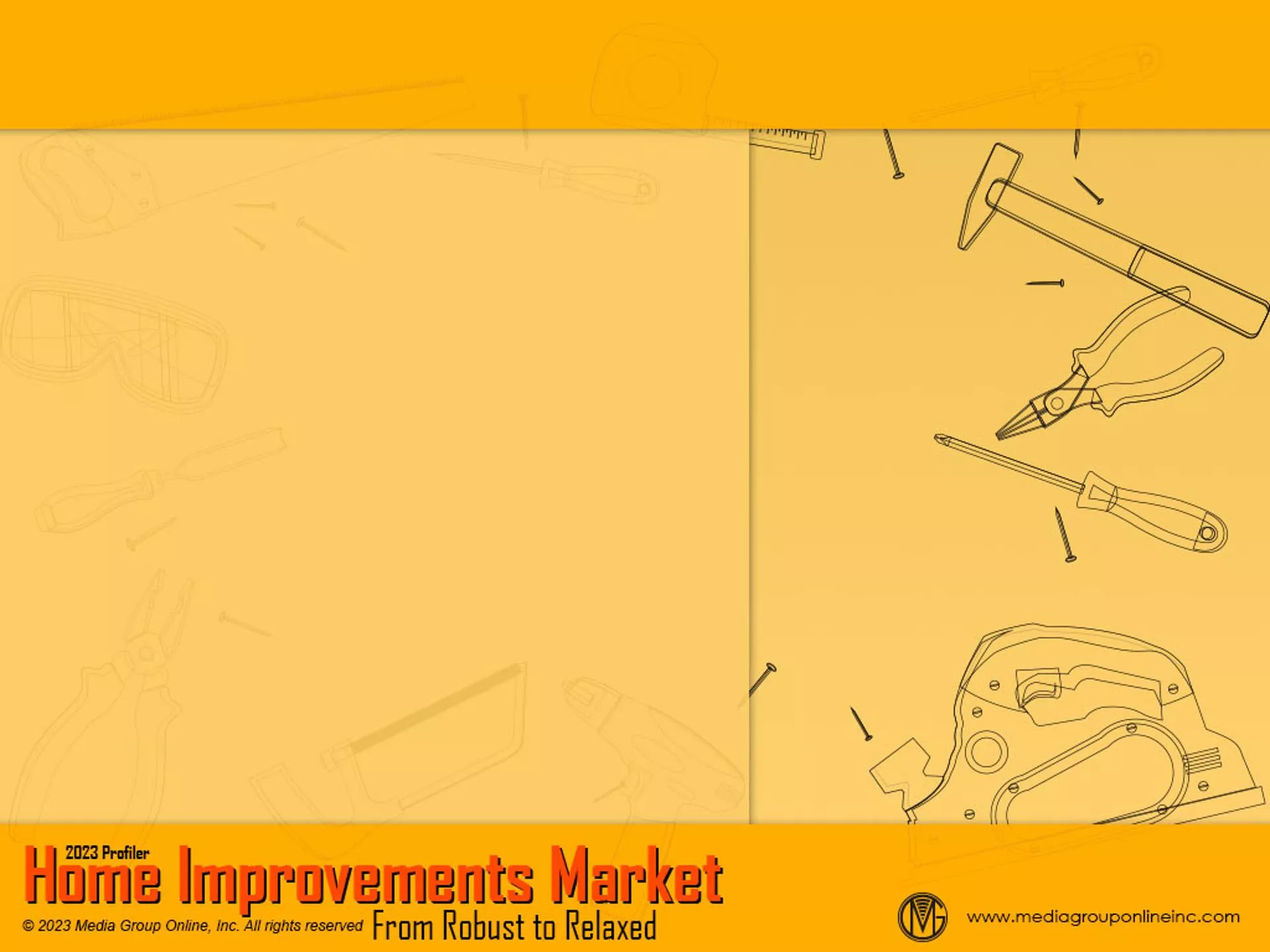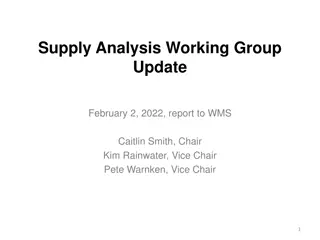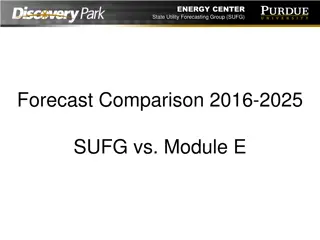Home Improvement Market Trends & Forecasts 2023
The once booming home improvement market is projected to decline in 2023 due to inflation, higher prices, and job market softening. Insights from 2022 show a surge in home improvement projects among new homebuyers. The impact of the housing market on home improvement spending is significant, while retailers experienced a substantial increase in sales despite rising costs. The corrective mode of the housing market indicates a shift towards more affordable homes in the coming years.
Download Presentation

Please find below an Image/Link to download the presentation.
The content on the website is provided AS IS for your information and personal use only. It may not be sold, licensed, or shared on other websites without obtaining consent from the author.If you encounter any issues during the download, it is possible that the publisher has removed the file from their server.
You are allowed to download the files provided on this website for personal or commercial use, subject to the condition that they are used lawfully. All files are the property of their respective owners.
The content on the website is provided AS IS for your information and personal use only. It may not be sold, licensed, or shared on other websites without obtaining consent from the author.
E N D
Presentation Transcript
The Boom Years Have Ended The home improvements market was a shining star from Q3 2020 through Q4 2022. Many homeowners were eager to spend to improve their home environment when initially stuck at home and then spent government stimulus money during 2021 and into 2022. According to the Joint Center for Housing Studies of Harvard University (JCHS), total home improvement spending increased 10.6% YOY during Q4 2020, 12.0% YOY during Q4 2021 and peaked during Q3 2022 with a 17.6% YOY increase to $466 billion. Given the burden of inflation, higher prices and softening in the job market, the JCHS is forecasting a quarter-by-quarter decline during 2023. Total spending will increase 14.1% YOY during Q1 2023 but then decline to just a 2.6% YOY increase during Q4 2023.
Insights from the 2022 Market The Recent Home Buyer Study from the Home Improvement Research Institute (HIRI) revealed more than 90% of survey participants who bought a home during 2022 have initiated home improvement projects, compared to 83% during 2020 and 2016. Those homebuyers spent a median of $6,000 during the first year of ownership on home improvement projects, with kitchen projects first at 42%; followed by bathroom at 33%; deck, patio, porch or fencing at 31%; and landscaping or cement work at 30%. Because of the increasing cost of a home and mortgage rates during 2022, more homebuyers were purchasing lower-priced homes requiring some renovation, a trend HIRI forecasts continuing during 2023 and 2024 or until the housing market stabilizes.
Impact of the Housing Market The sale and purchase of new and existing homes have always been major drivers of home improvement spending. As of January 2023, the US housing market is in a corrective mode and the consensus is the market won t crash as it did during 2008. Although mortgage rates have somewhat eased, January 2023 pending sales decreased 32% YOY, new listings decreased 22% YOY and homebuyer mortgage payments increased 36% YOY. First- time buyers are generally unable to afford to buy a new home. Research shows homebuilders didn t overbuild primarily because of high materials costs; however, those costs are decreasing, which will result in more affordable homes, especially for those buyers without an adequate down payment or unable to qualify for a mortgage.
From the Retail Perspective The unprecedented increase in home improvement spending during 2020 2021 was a boon for independent retailers. According to the North American Hardware and Paint Association (NHPA), independents net profits were three times more during 2021 than a typical year. Despite increasing material and product costs and inflation, the NHPA reported mid-2022 sales increased for approximately 67% of independent retailers, although higher costs and inflation drove most of the increase as well as increased buying from pro contractors. NHPA data shows total industry retail sales increased by 5.9% from 2021 to 2022, retail sales are forecast to increase by 2.1% from 2022 to 2023 and a CAGR (compound annual growth rate) of 3.2% during the 2021 2026 period.
On the Trail of DIYers and DIFMers The Farnsworth Group s Home Improvement Monthly Tracker indicates 39.9% of surveyed homeowners postponed a home improvement project during December 2022, compared to 57.0% (November), 51.1% (October) and 53.1% (September). Although December s postponements were a significant improvement from the previous three months, budget/financial priorities was still the #1 reason for the postponement at 58.5% during December, but that was the lowest percentage since August. Despite inflation, materials costs and budget constraints, 80.2% of homeowners surveyed during December said they started a new DIY project during the last two to three weeks, and only slightly less than the previous four months.
2023 Home Design and Improvement Trends More homeowners are choosing natural materials for countertops and wood for cabinets and vanities, according to Houzz s top home design predictions for 2023. Manmade materials are losing favor and possibly because of consumers growing interest in sustainability. A trend that continues from the early days of the pandemic is connecting kitchens with outdoor spaces, which is what 20% of homeowners told Houzz they have done. Larger windows and interior wallpaper with nature themes are also part of the trend. Continuing interest in the smart-home concept is driving purchases of appliances with high-tech features: Wi-Fi connectivity (25%), wireless smartphone and tablet controls (24%), color touch-screen display (14%) and smart-home connectivity (10%).
Advertising Strategies The Home Improvement Research Institute forecasts more homeowners are planning kitchen projects during early 2023. Promoting special offers and discounts for a qualifying purchase of cabinets, flooring, etc. is more likely to connect with these homeowners. Inflation and retail prices are causing many homeowners to buy cheaper home improvement brands or products. Retailers can feature these less expensive choices in their advertising and with in-store displays. Offer a discount coupon to upsell to higher-priced products. Home improvement contractors can position themselves for more projects by promoting their availability since many homeowners are finding contractors are often too busy. Consider offering a scheduling app so consumers can reserve time for projects.
New Media Strategies Home improvement retailers and contractors can generate more interest in their products and services by using social media and other digital platforms to post content that helps homeowners during their project planning phase. Research indicates Gen Zers are less likely to have DIY skills and know what products they need for their DIY projects. Create and post short videos on social media showing how to fix a leaky faucet and similar DIY skills and offer a discount for matching products. As with many retail products, consumers, including homeowners, are buying brands/products based on their sustainability practices. Retailers should allocate some portion of social media content to show they are stocking sustainable products.




























